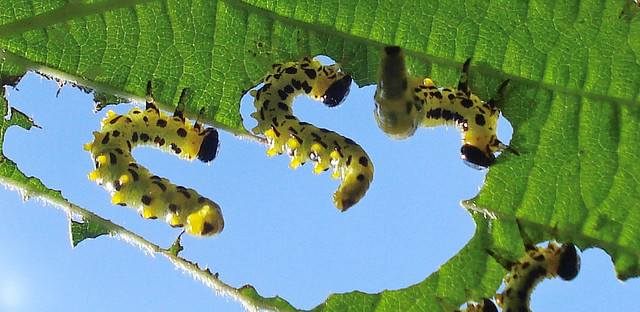If your trees have chewed or skeletonized leaves, then sawflies, slugs or Japanese beetles may be at work. Discolored leaves or blossoms can be a sign of thrips, aphids, spider mites or lace bugs.
One simple solution for some harmful insects - including the aforementioned sawflies and aphids, among others - is horticultural oil, which has been used for much of time to protect trees and plants. While many petroleum-based oils are commercially available, there are also a number of natural, plant-based options, like cottonseed oil. Horticultural oils are safe for human contact and usually have little or no effect on surrounding wildlife or non-invasive insects. However, their use does carry a number of disadvantages.
 |
| Sawfly larvae devour a leaf. Photo credit: Mick E. Talbot |
A horticultural oil's success rate is relatively time sensitive, as they often affect their intended targets through coating a sticky - rather than toxic - film on the tree. Try to avoid spraying oil when temperatures are excessively high - the tree may already be under stress from dry conditions. Most notably, not all pests can be controlled with this method. Remember: focus on identifying the problem first, as many pest problems will need more specialized care from an arborist.
Look out for future classes on insect identification (such as our CSI for Bugs course offered last month) on our calendar of events online.

No comments:
Post a Comment